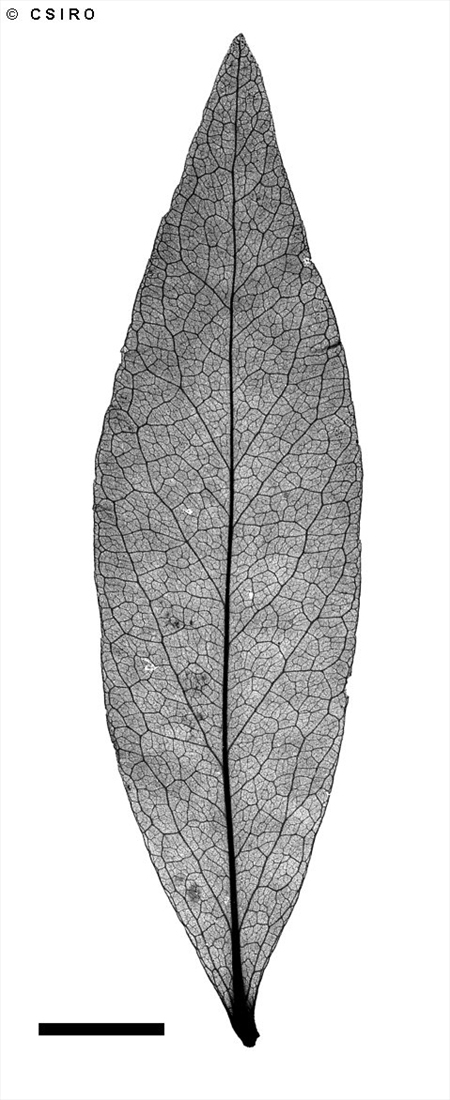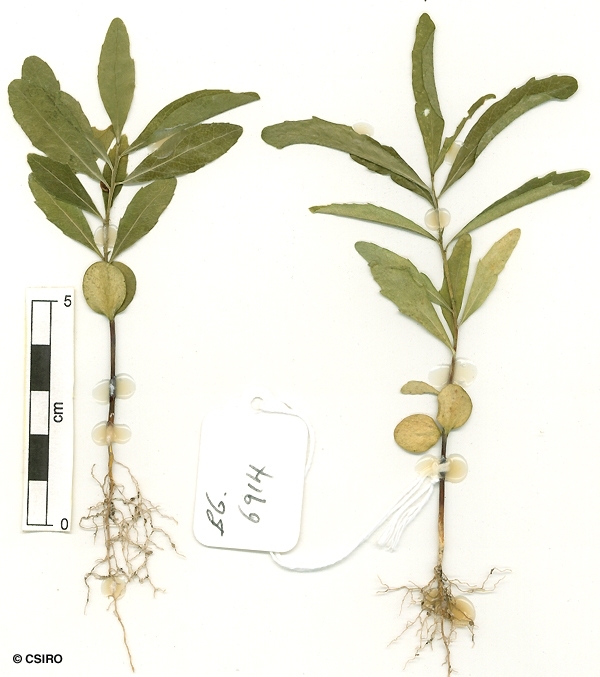Australian Tropical Rainforest Plants - Online edition
Denhamia pittosporoides F.Muell. subsp. pittosporoides




Jessup, L.W. (1984) Flora of Australia 22: 154.
Denhamia, Veiny; Boxwood, Orange; Denhamia; Orange Boxwood; Veiny Denhamia
A yellow or orange layer normally visible beneath the dead bark.
Capsules about 12-16 mm long with woody valves about 16 x 10 mm. Calyx persistent at the base. Seeds globular, about 5 x 3-4 mm. Testa thin, covered with orange glands. Cotyledons about 4 x 4 mm, radicle about 1 mm long.
Cotyledons broadly elliptic to broadly ovate, about 12-16 x 10-13 mm. First pair of true leaves usually alternate, sometimes subopposite. Margins serrate. At the tenth leaf stage: cataphylls often present among leaves. Leaf blades oblong to obovate to obovate, margins toothed in the apical half. Stipules very small, about 0.25 mm long and often more obvious when brown and moribund. Stem terete to slightly 4-angled. Seed germination time 61 days.





